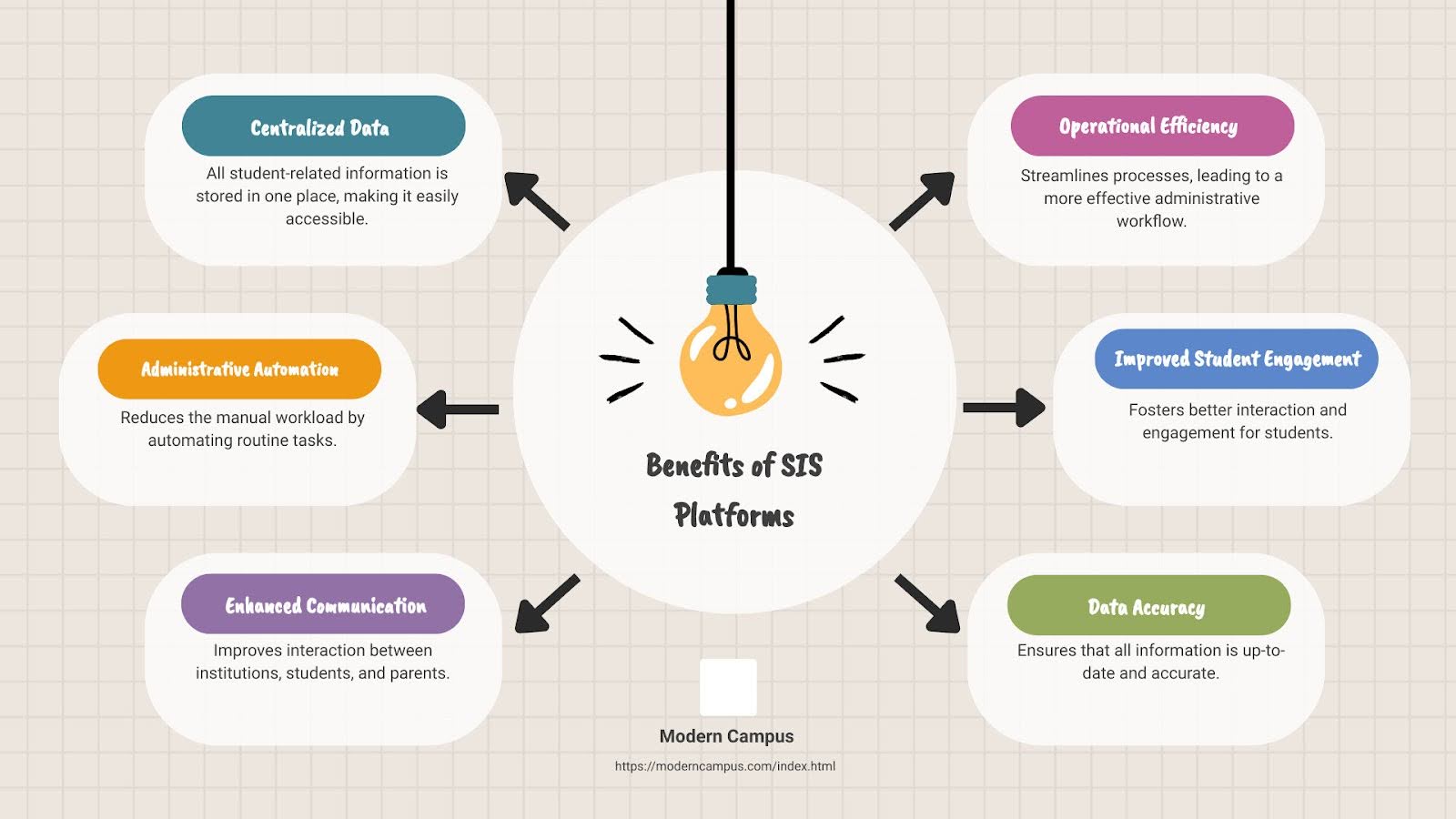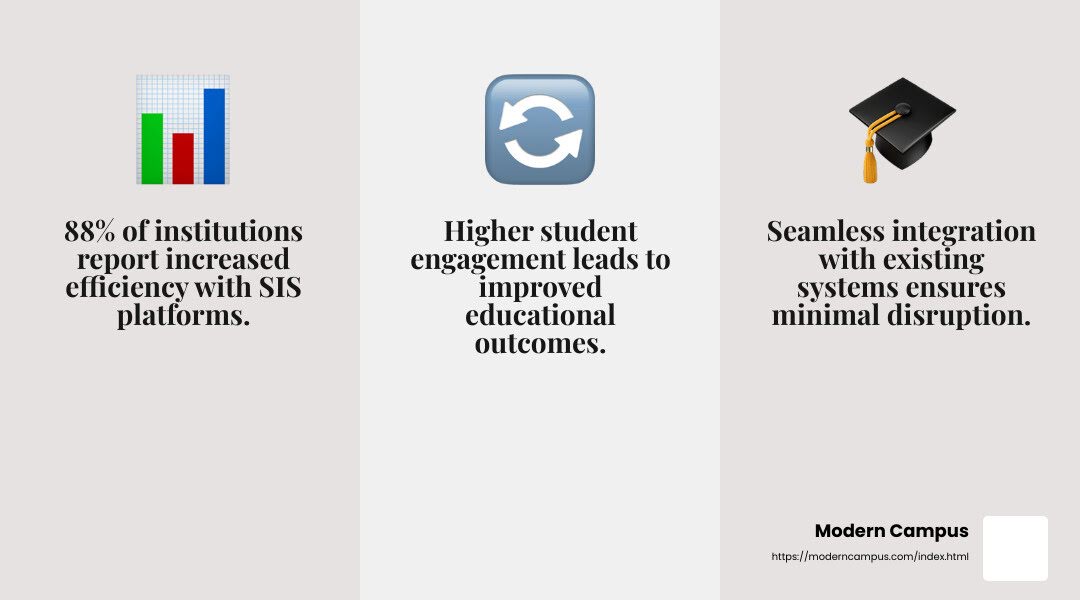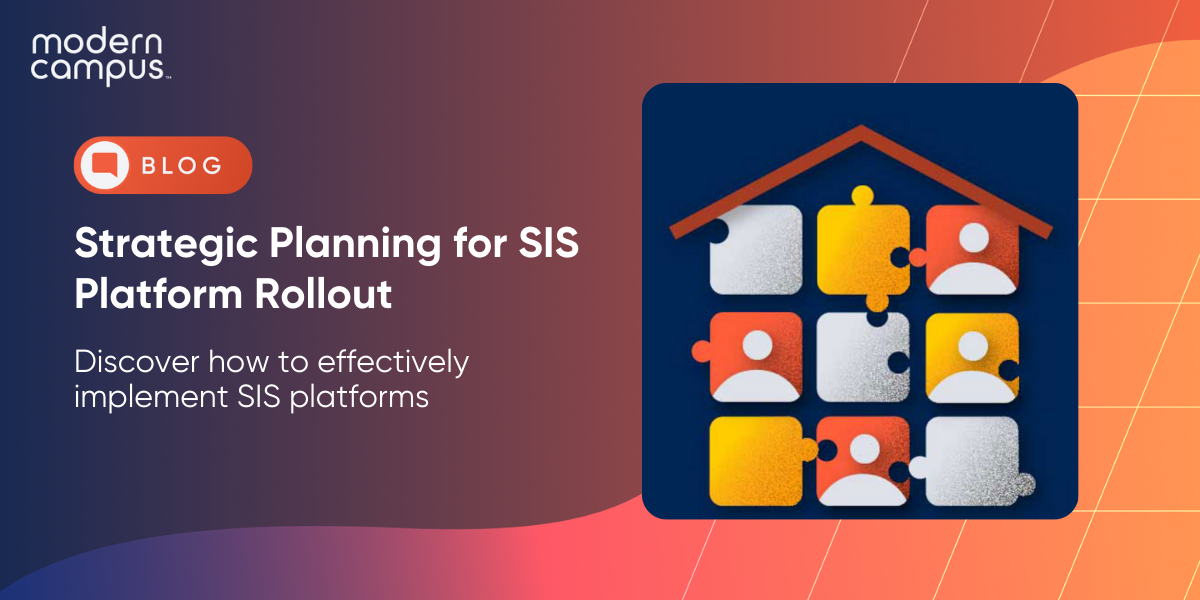Strategic Planning for SIS Platform Rollout
Mapping Success: Key Strategies for a Seamless SIS Platform Rollout
For higher education professionals in the U.S. and Canada, including registrars and student affairs managers, utilizing an Student Information System (SIS) platform can lead to more streamlined operations and ultimately a better educational experience.
SIS platforms are a cornerstone of modern higher education institutions, merging technology with student management to create an efficient and engaging academic environment. At its core, an SIS platform is designed to manage everything from student records and grades to admissions and financial transactions. For administrators, this means less paper shuffling and more time focused on strategic tasks like enhancing student engagement and boosting student retention rates.
Understanding and implementing SIS platforms is crucial. These systems offer:
- Centralized data management for all student-related information
- Automation of administrative tasks, reducing manual workload
- Improved communication between institutions, students and parents
The benefits of these platforms extend beyond basic administration. They can transform how institutions operate and improve operational efficiency and increase student satisfaction.

Key Features of SIS Platforms
Student Information Systems are essential tools in higher education, designed to handle a wide array of tasks that keep an institution running smoothly. At their core, these platforms focus on student data management—organizing everything from enrollment details to grades and attendance records.
One of the primary features of SIS platforms is their ability to streamline administrative tasks. By automating these processes, institutions can significantly reduce the time and effort spent on manual data entry and paper-based systems. This efficiency saves time and minimizes errors which leads to more accurate data management.
Data organization is another critical component of SIS platforms. These systems centralize all student-related information. With this, it’s much easier for administrators, faculty and students to access the data they need. This centralization supports better decision-making and improves the institution's overall efficiency.
Modern SIS platforms are typically web-based software, which means they can be accessed from anywhere with an internet connection. This mobility is crucial for today's educational landscape where remote learning and flexible work environments are becoming more common.
Integration with other systems, like Learning Management Systems (LMS), is also a beneficial feature of SIS platforms. This integration allows for seamless communication between different software applications, ensuring that data flows smoothly and accurately across platforms. This connectivity supports a more cohesive educational experience for both students and staff.
The key features of SIS platforms make them indispensable tools in the modern educational environment. These features not only enhance operational efficiency but also improve the overall experience for students and staff alike.

Benefits of Implementing SIS Platforms
Enhancing Student and Staff Experience
Implementing SIS platforms brings a host of benefits that significantly improve student and staff experiences in higher ed institutions. Let's explore how these systems can make a real difference.
By automating routine tasks, SIS platforms free up valuable time for faculty and administrative staff. This automation allows them to focus more on meaningful interactions with students rather than getting bogged down with paperwork. For example, tasks like attendance tracking and grade submissions become quick and error-free.
Speaking of errors, data accuracy is another critical benefit. With everything centralized in a digital system, the chances of mistakes due to manual data entry are drastically reduced. Accuracy is crucial when dealing with sensitive student information and ensures that reports and records are always up-to-date and reliable.
Streamlined operations are a direct result of this efficiency and accuracy. With all data in one place, processes that used to take hours can now be completed in minutes. Streamlining helps in faster decision-making and boosts overall productivity across the institution.
But it's not just about operations. SIS platforms also boost student engagement. These systems often come with features that allow students to easily access their academic records, schedules and other important information. This transparency keeps students informed and engaged with their educational journey.
On the faculty side, support is greatly improved. Teachers and staff have easy access to student data and analytics, allowing them to tailor their interactions and support to each student's needs. A personalized approach can lead to better educational outcomes and a more supportive learning environment.
Finally, the overall operational improvement is undeniable. With everything running smoothly and efficiently, institutions can focus on strategic goals and improving the educational experience rather than getting caught up in administrative hassles.
SIS platforms are about managing data and changing the educational experience for everyone involved. From increasing efficiency and accuracy to boosting engagement and support, these systems are invaluable tools for modern institutions looking to thrive in today's educational landscape.

Steps for a Successful SIS Platform Rollout
Integration with Existing Systems
Rolling out a new SIS platform is a significant endeavor for any institution. Careful planning and a strategic approach are crucial to ensure success. Let's explore the key steps involved in this process.
- Planning: The foundation of a successful rollout is robust planning. Start by identifying the specific needs of your institution. What are the pain points you're trying to solve with a new SIS platform? Create a comprehensive plan that outlines your objectives, timelines and resources required. Your plan will serve as the roadmap throughout the implementation process.
- Stakeholder Involvement: Engaging stakeholders early and often is vital. The group often includes administrators, faculty, IT staff and students—as their input will provide valuable insights into the needs and expectations of the new system. Regular communication and updates keep everyone aligned and invested in the success of the rollout.
- Phased Implementation: Instead of a full-scale launch, consider a phased implementation that allows you to test the system in smaller segments before a complete rollout. Start with a pilot program in one department or with a specific set of features. Gather feedback, make necessary adjustments and then gradually expand to other areas.
- Compatibility and Data Migration: A challenge is ensuring the new SIS platform is compatible with existing systems. Conduct thorough compatibility checks to ensure seamless integration. Additionally, data migration is a critical step. Ensure that all historical data is transferred accurately and securely to the new system. The process might require data cleansing to avoid transferring outdated or incorrect information.
- Seamless Transition: Aim for a seamless transition with minimal disruption to daily operations. Provide training sessions for staff and faculty to familiarize them with the new system. Offer ongoing support to address any issues that arise. A smooth transition will help build confidence in the new platform and encourage its adoption.
By following these steps, institutions can effectively navigate the complexities of an SIS platform rollout. With careful planning, stakeholder involvement and a phased approach, the transition can be smooth and successful, paving the way for improved educational experiences.
Achieve a Seamless SIS Platform Rollout by Finding the Right Partner
Strategic planning is crucial for the successful rollout of an SIS platform. Without proper planning, institutions may face challenges such as data migration issues, user adoption hurdles and integration difficulties—all of which can hinder the efficiency and effectiveness of the new system. A thoughtful approach ensures that all stakeholders are involved, that data is transferred seamlessly and that the platform is optimized to meet the institution’s specific needs.
For institutions looking to streamline this process, partner with a trusted platform provider that offers personalized support, scalable solutions and comprehensive tools. This approach guarantees a smoother transition and maximizes the benefits of the SIS platform, ensuring long-term success for both administrators and students.
For more information on how Modern Campus can support your institution's journey from learner to earner, explore our offerings.
Last updated: January 14, 2025

